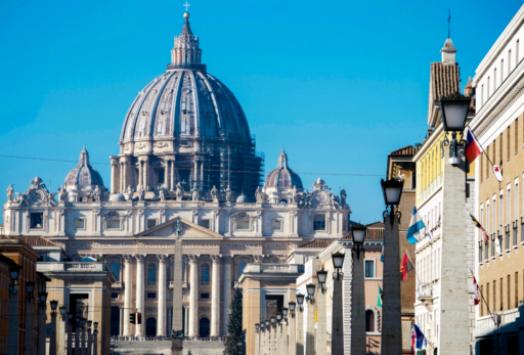The history of Vatican City is rich and filled with significant events that have shaped the course of both the city-state and the Catholic Church. From the coronation of Charlemagne in St. Peter's Basilica to the papal inaugurations, the Reformation, and canonization ceremonies, St. Peter's Basilica has been a witness to countless historical milestones. Each event has left an indelible mark on the basilica, reflecting the religio-political significance of Vatican City in the broader context of European history.

Coronation of Charlemagne in St. Peter's Basilica
The Coronation of Charlemagne in St. Peter's Basilica marked a significant event in European history. Charlemagne, also known as Charles the Great, was crowned as Emperor of the Holy Roman Empire by Pope Leo III on Christmas Day in the year 80This event solidified the close relationship between the Church and the political rulers of the time, and Charlemagne's reign had a lasting impact on the development of Europe during the Middle Ages. The coronation in St. Peter's Basilica symbolized the unity of Church and state, and Charlemagne's rule would go on to shape the course of European history for centuries to come.
Sack of Rome and the impact on St. Peter's Basilica
The Sack of Rome in 1527 had a profound impact on St. Peter's Basilica. The basilica was looted and damaged during the invasion, resulting in the loss of precious artworks and treasures. The event caused significant destruction to the structure of the basilica, leading to a need for extensive restoration work. The sack of Rome highlighted the vulnerability of the basilica and its importance as a target during times of conflict. Despite the damage inflicted during the invasion, St. Peter's Basilica was eventually restored and continued to be a significant site for religious ceremonies and events.
Papal Inaugurations in St. Peter's Basilica
Papal inaugurations in St. Peter's Basilica have been significant events throughout history. The basilica, located in Vatican City, is the traditional site for the inauguration of the Pope, the leader of the Catholic Church. These ceremonies carry immense religious and historical importance, marking the beginning of a new papal reign and setting the tone for the future of the Church. With its grand architecture and rich history, St. Peter's Basilica provides a fitting backdrop for these solemn and momentous occasions. Each papal inauguration is a testament to the continuity and enduring legacy of the papacy, as well as a reflection of the beliefs and values of the Catholic faith.
Reformation and St. Peter's Basilica
The Reformation was a significant event in the history of St. Peter's Basilica. During this period of religious upheaval in the 16th century, the authority of the Catholic Church was challenged and new Protestant denominations emerged. As a result, St. Peter's Basilica became a focal point for the Catholic Church to reaffirm its authority and counter the growing influence of Protestantism. The Basilica underwent extensive renovations and refurbishments during this time, as the Church sought to maintain its power and prestige in the face of the Reformation. The art and architecture of St. Peter's Basilica reflected the Church's response to the challenges posed by the Reformation, with grandiose displays of wealth and power intended to impress and awe visitors. Despite the tumultuous period of the Reformation, St. Peter's Basilica remained a symbol of the Catholic Church's enduring strength and resilience.
Canonization ceremonies at St. Peter's Basilica
Canonization ceremonies at St. Peter's Basilica hold a special significance in the Catholic faith, as they mark the official recognition of individuals as saints by the Pope. These ceremonies take place in the grandeur of St. Peter's Basilica, one of the most iconic and important religious sites in the world.
The basilica's vast interior provides an awe-inspiring backdrop for the elaborate rituals that accompany canonization ceremonies. The colorful procession of cardinals, bishops, and other dignitaries, the solemn chants of the choir, and the scent of incense filling the air create a reverent atmosphere befitting the occasion.
During the ceremony, the Pope reads aloud the official decree of canonization, declaring the individual to be a saint and affirming their place in the communion of saints. This proclamation is met with joyous applause and prayers of gratitude from the gathered faithful, who have come from near and far to witness this momentous event.
After the ceremony, the newly canonized saint's relics may be venerated by the faithful, further cementing their status as an intercessor and example of holiness for Catholics around the world. The canonization ceremony at St. Peter's Basilica serves as a reminder of the Church's rich tradition of recognizing and honoring those who have lived lives of exceptional virtue and faithfulness.
